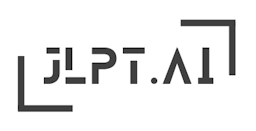

N2
音読み:ha
訓読み:nami
ハha
なみnami
Wave
Imagine standing on a beach, watching the waves crash onto the shore. The rhythmic motion of the waves creates a sense of tranquility and harmony.
The kanji '波' is a mid-level character commonly encountered in JLPT materials, especially at the N2 level. Its specific meaning and reading make it important for both kanji and reading comprehension sections of the exam.
海の波がとても高いです。
The waves in the ocean are very high.
うみのなみがとてもたかいです。
umi no nami ga totemo takai desu.
波の音が心を落ち着かせる。
The sound of waves calms the heart.
なみのおとがこころをおちつかせる。
nami no oto ga kokoro o ochitsukaseru.
彼は波乗りが上手です。
He is good at surfing.
かれはなみのりがじょうずです。
kare wa naminori ga jouzu desu.